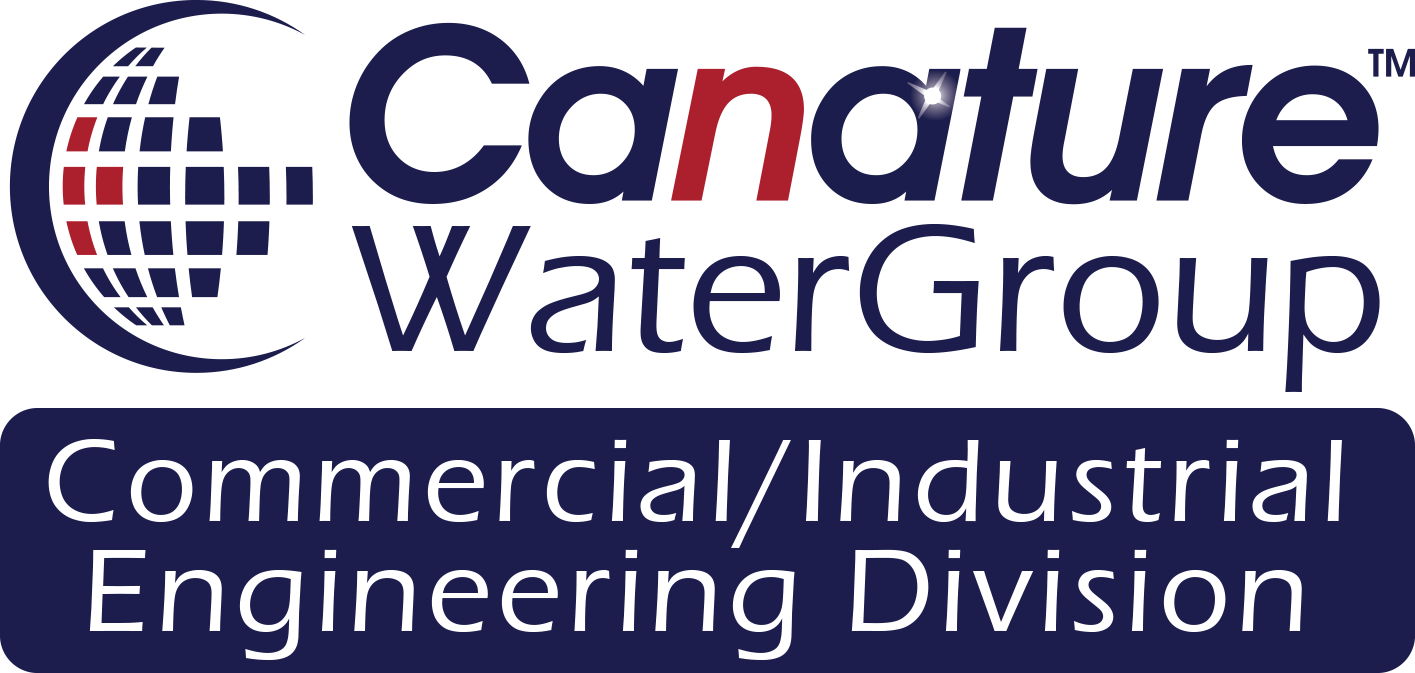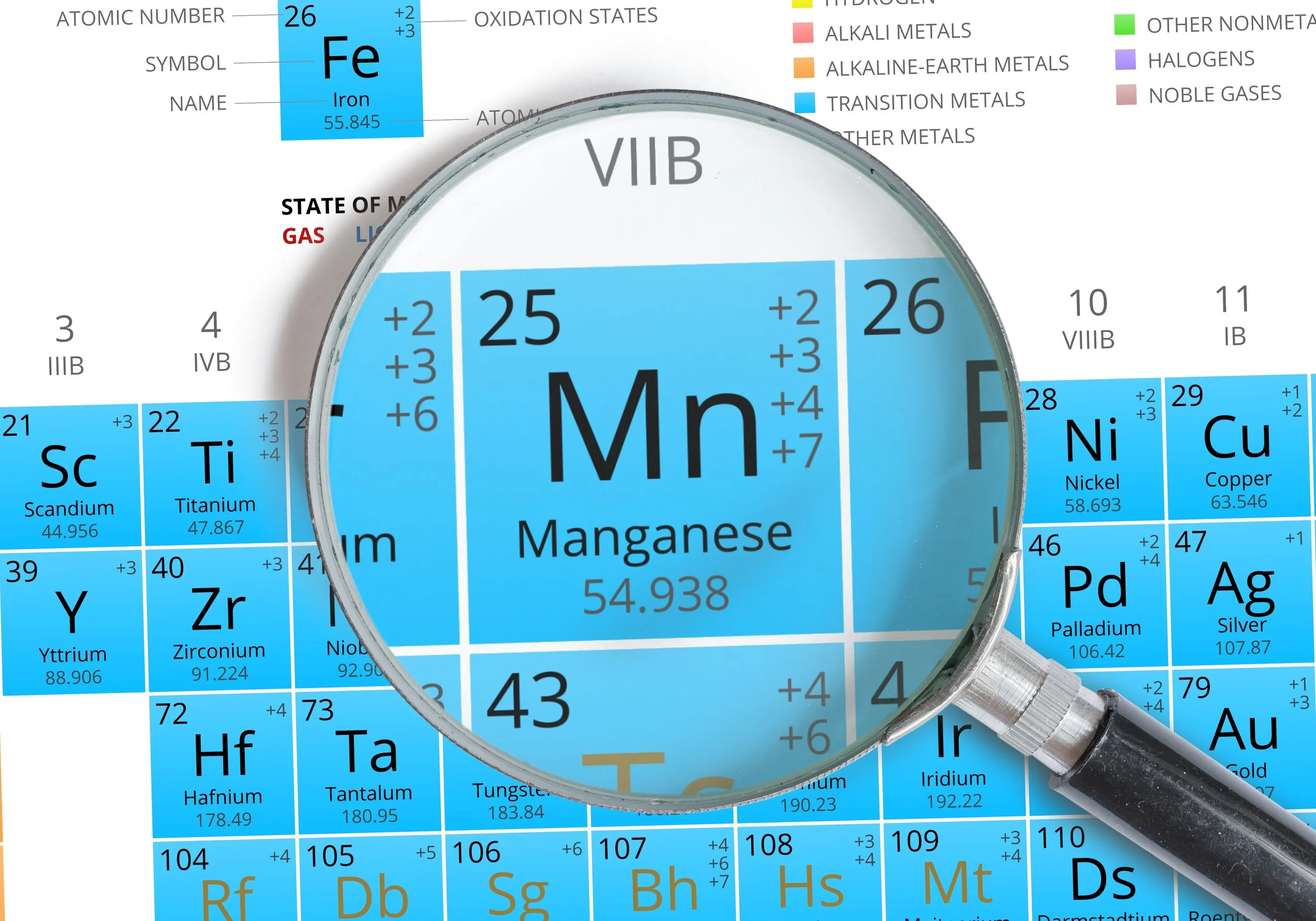Why is Manganese getting a lot of attention?
Tyler Gamble
Commercial Products Application Manager
The Government of Canada recently, May 10th 2019, revised and lowered its aesthetic objective (AO) to 0.02mg/L and added a Maximum Allowable Concentration (MAC) 0.12mg/L for manganese. The objective of lowering the aesthetic objective is to give the public more confidence in their public water utilities as it would lessen the number of instances where black staining occurs in public utilities. The MAC was introduced as a new measure as manganese is tied to impaired neurological development in infants and young children. It is also important for pregnant women to mitigate their exposure to manganese from drinking water. These findings were based on new published studies of manganese and the adverse affects it can have. This also puts Canada in line with other countries (ex. Australia) in establishing a health-based guideline for manganese.
What is manganese?
Manganese is a naturally occurring mineral. It is an important micronutrient that is required for metabolic functions, bone development, the healing of wounds and makes up some anti-oxidants in humans. Manganese (Mn) deficiency is not very common as humans get enough of it from food in their diet.
In water, manganese is most often found in 2 oxidation states: Mn(II), Manganese-2 and Mn(IV), Manganese-4. Mn(II) is soluble in water where as Mn(IV) will form insoluble, will form a solid, oxides in water. In neutral to low pH waters, less than 8, and low oxidant concentrations, the formation of soluble Mn(II) is favoured. In higher pH ranges in naturally occurring waters with strong oxidants added like air (oxygen), potassium permanganate (KMnO4), sodium hypochlorite aka bleach (NaClO), etc. Mn(IV) is favoured. Mn(IV) oxides are visible as black staining. A 3rd oxidation state may also be found, Mn(III), manganese-3. Mn(III) is usually a transition oxidation state between Mn(II) and Mn(IV) so it’s not as common. Mn(III) is also a solid in water but is black or brown colour when present.
Where is manganese found?
Manganese is a naturally occurring mineral that is found in air, water and soil. In terms of water, manganese is found in both ground water and surface water supplies. It is typically more frequent and in greater concentrations in ground water sources because of the low oxygen environment of wells compared to surface water supplies. The highest concentrations of manganese are most often found in water sources that have a low pH and low oxygen (or other oxidant) environments.
How is manganese treated?
Now that we know a little bit about manganese, and how it exists in the natural environment, we can develop strategies to treat it.
In waters with low pH and low oxidants, we’ll have soluble manganese in the water. In this scenario, manganese can be treated with a standard water softener. Manganese is a little more stubborn to treat in softeners, when compared to standard hardness, so salt doses and compensated hardness will need to be adjusted accordingly. With manganese, it’s best practice to use a minimum salt setting 10lb of salt/ft³ of resin and a compensated hardness value where each mg/L of Mn, is 8 gpg (grains/gallon).
If a softener is not a desirable, or preferred, equipment choice, then a combination of raising the pH, oxidation, and filtration may be used. In this scenario, the pH addition can come from chemical feed pumps dosing a high pH solution. Caustic (NaOH) or Sodium Bicarbonate (NaHCO3) are two examples of compounds that can be used to increase the pH. The other option would a sacrificial media bed with calcite (CaCO3) and potentially MagOx (MgO). Once the pH has been raised to the desirable level, typically greater than 8, the oxidant of your choice is added and the manganese can be removed via filtration. One notable exception to the pH rule here would be if you choose to use manganese greensand filters. This filter media can be used at lower pH values with good removal results.
Certified Treatment Technologies: WQA ORD1901
At this point, there are no NSF type standards for treatment technologies. However, the Water Quality Association (WQA), in association with Health Canada, has developed a temporary standard for Mn removal to below MAC limits; WQA ORD1901. This temporary standard would work alongside the already established certifications for softeners (NSF/ANSI 44), filters (NSF/ANSI 53), drinking water reverse osmosis systems (NSF/ANSI 58 and CSA B483.1 in Canada) and distillation systems (NSF/ANSI 62) with footnotes that it was tested in accordance with the WQA ORD1901. For further details on the WQA ORD1901, please visit the link here. Please note that these NSF/ANSI certifications are for residential style equipment.
While we outlined some of the basic treatment technologies, by no means is this an extensive list and does not come with any form of guarantee. As with any application, it’s always best to seek out the advice of a water treatment professional to get the best information as it pertains to your exact scenario.



